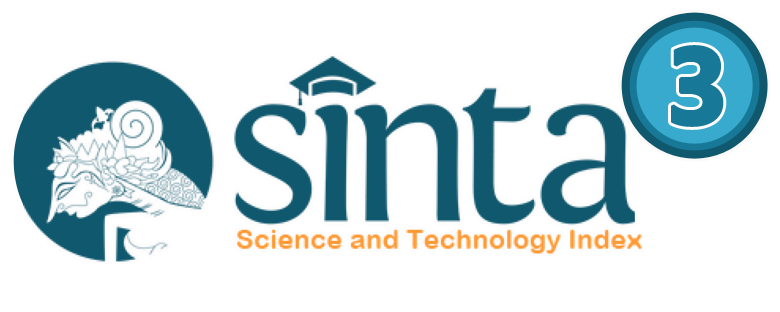Mosque Financial Management: Accounting Recording System Analysis
DOI:
https://doi.org/10.35838/jrap.2024.011.02.16Keywords:
Accounting System, Implementing, ISAK 35, Mosque, TransparencyAbstract
Purpose: This research was conducted to analyze whether a quality accounting system can be realized by implementing ISAK 35 and how the ISAK 35 accounting system will be implemented in 2024, focusing on the Mosque.
Methodology: This research uses qualitative techniques and data collection through interviews, observations, and documentation. This research was conducted at the Al-Hikmah Delitua Mosque.
Finding: The results of this study state that the accounting recording system for financial management of Al-Hikmah Mosque has not implemented an Accounting Recording System Based on the ISAK 35 accounting standard, the recording system is still carried out using simple records, which is recorded when cash comes in and money goes out.
Implication: The implications of this study indicate that the implementation of ISAK 35 in the accounting recording system at the Al-Hikmah Delitua Mosque will increase financial transparency and accountability, which can strengthen the congregation's trust in the management of mosque funds. The implementation of this standard will assist in the preparation of more structured financial reports and in accordance with applicable accounting principles.
Originality: This study specifically examines budget transparency to increase congregational trust and there is an increase in budget transparency management in mosque managers.
Downloads
References
Afridayani, A., Pratiwi, A. P., Purwatiningsih, P., Ahnaf, T. Q., & Laelani, A. (2022). Implementasi ISAK 35 Pada Pelaporan Keuangan SDIT Permata Gemilang. KUAT : Keuangan Umum Dan Akuntansi Terapan, 4(1), 62-67. https://doi.org/10.31092/kuat.v4i1.1498
Andreani, Y., & Syafina, L. (2022). Akuntanbilitas Dan Transparansi Laporan Keuangan Berbasis Teknologi Informasi Pada Badan Amil Zakat Nasional Kabupaten Deli Serdang. AKUA: Jurnal Akuntansi Dan Keuangan, 1(2), 203-209. https://doi.org/10.54259/akua.v1i2.771
Arista, R., & Nurlaila, N. (2022). Pengaruh Sistem Pencatatan Laporan Keuangan Terhadap Optimalisasi Kinerja Karyawan Pada Perusahaan Umum Daerah (Pud) Pasar Kota Medan. Sibatik Journal: Jurnal Ilmiah Bidang Sosial, Ekonomi, Budaya, Teknologi, Dan Pendidikan, 1(5), 585-594. https://doi.org/10.54443/sibatik.v1i5.66
Asyidah, N., & Darwis, R. H. (2021). Manajemen Keuangan Masjid Melalui Pemberdayaan Ekonomi. Jurnal Akuntansi Dan Keuangan Syariah (Jurnal Akunsyah), 1(1), 42-53. https://doi.org/10.30863/akunsyah.v1i1.3018
Diviana, S., Putra Ananto, R., Andriani, W., Putra, R., Yentifa, A., Zahara, & Siswanto, A. (2020). Penyajian Laporan Keuangan Entitas Berorientasi Nonlaba Berdasarkan Isak 35 Pada Masjid Baitul Haadi. Akuntansi Dan Manajemen, 15(2), 113-132. https://doi.org/10.30630/jam.v15i2.20
Fatmawati, I., & Adan, L. H. (2023). Analisis Penerapan ISAK No 35 Terhadap Kinerja Dan Pelaporan Keuangan Masjid Baitul Hikmah Kota Baubau. ENTRIES, 5(1), 89-98.
Hariyatih, S., & Utami, R. J. (2023). Analisis Sistem Pencatatan Akuntansi pada Pengelolaan Keuangan Masjid: Studi Kasus: Masjid Al-Hidayah Medan Perjuangan, Sumatera Utara. JIKEM: Jurnal Ilmu Komputer, Ekonomi dan Manajemen, 3(1), 1082-1093.
Islamiyah, N. (2019). the Financial Management Practice of Mosque: Study Case in Malaysia. Jurnal Akuntansi Dan Keuangan Indonesia, 16(1), 108-121. https://doi.org/10.21002/jaki.2019.06
Juniaswati, K. T., & Murdiansyah, I. (2022). Akuntabilitas Pengelolaan Keuangan Masjid Sabilillah Kota Malang Berdasarkan ISAK 35. AKTSAR: Jurnal Akuntansi Syariah, 5(1), 118-135. https://doi.org/10.21043/aktsar.v5i1.15273
Lasfita, N., & Muslimin. (2020). Penerapan ISAK no. 35 pada organisasi keagamaan Masjid Al- Mabrur Sukolilo Surabaya. Jurnal Sosial Ekonomi Dan Politik, 1(1), 65-68.
Lubis, K. F., Nasution, Y. S. J., & Syafina, L. (2023). Analisis Penerapan Prinsip Akuntansi Dan Pengelolaan Keuangan Pada Masjid Di Kecamatan Kotanopan Kabupaten Mandailing Natal. Jurnal Kendali Akuntansi, 1(4), 356-369. https://doi.org/10.59581/jka-widyakarya.v1i4.1366
Maulana, I. S., & Rahmat, M. (2021). Penerapan Isak No. 35 Tentang Penyajian Laporan Keuangan Entitas Berorientasi Nonlaba Pada Masjid Besar Al-Atqiyah Kecamatan Moyo Utara Kabupaten Sumbawa. JAFA Fakultas Ekonomi Dan Bisnis UTS Journal of Accounting, Finance and Auditing, 3(2), 63-75. https://doi.org/10.37673/jafa.v3i02.1210
Mosteanu, N. R., & Faccia, A. (2020). Digital systems and new challenges of financial management–FinTech, XBRL, blockchain and cryptocurrencies. Quality–Access to Success, 21(174), 159-166.
Purba, S., Nazara, I., Gulo, S., Ratna, V., Sembiring, H., Sinurat, B., Arya, A., & Zebua, J. (2022). Penyajian laporan keuangan entitas berorientasi nonlaba berdasarkan ISAK 35 pada Panti Asuhan Sendoro Medan. Humantech: Jurnal Ilmiah Multi Disiplin Indonesia, 2(1), 284-291. https://doi.org/10.32670/ht.v2iSpesial%20Issues%201.1180
Putri, O. L. A., & Ayem, S. (2021). Pengaruh Penerapan PSAK 45 dan Ketepatwaktuan Penyampaian Laporan Keuangan terhadap Akuntabilitas Laporan Keuangan Organisasi Nirlaba. Owner, 5(2), 429-441. https://doi.org/10.33395/owner.v5i2.479
Safalah, A., & Kharisma, T. (2024). Sistem Informasi Manajemen Pengelolaan Keuangan Masjid Berbasis Android Webview. 1, 1-14. https://doi.org/10.47134/jte.v1i1.2478
Salman, K. R., Ilham, R., Djunaedi, A. Z., Suparno, S., & Sa’diyah, H. (2023). Pengembangan Sistem Informasi Akuntansi Masjid (Simas) Pada Masjid Ash-Shobirin Rungkut Surabaya. Jurnal Terapan Abdimas, 8(1), 132-140. https://doi.org/10.25273/jta.v8i1.14429
Shakespeare, C. (2020). Reporting matters: the real effects of financial reporting on investing and financing decisions. Accounting and Business Research, 50(5), 425-442. https://doi.org/10.1080/00014788.2020.1770928
Shoimah, I., Wardayati, S. M., & Sayekti, Y. (2021). Adaptasi Laporan Keuangan Pada Entitas Nonlaba Berdasarkan Isak 35 (Studi Kasus pada Universitas Ibrahimy Sukorejo Situbondo). Jurnal Akuntansi Dan Pajak, 21(2), 243-259. https://doi.org/10.29040/jap.v21i02.1388
Siahaan, E. S. R., Nurlaila, N., & Sudiarti, S. (2023). Analisis Penerapan Pelaporan Keuangan Entitas Nirlaba Berdasarkan Isak No.35 Pada Masjid Di Kota Medan (Studi Kasus Masjid Al-Ihsan Jalan Suluh). Sebatik, 27(2), 517-524. https://doi.org/10.46984/sebatik.v27i2.2311
Sitompul, M., Harahap, N., & Harmain, H. (2015). Akuntansi Mesjid. FEBI UIN-SU Press.
Sopanah, A., Sodik, M., Gunarianto, Bahri, S., & Puspitosarie, E. (2023). Public participation in budgeting practices in village government. Proceeding of International Conference on Accounting & Finance, 1, 93-102. https://doi.org/10.20885/InCAF.vol1.art11
Sugiyono, P. D. (2019). Metode Penelitian Kuantitatif Kualitatif dan R&D. Alfabeta.
Suherman, L. P. (2019). Analisis Pentingnya Akuntansi Pesantren Bagi Pondok Pesantren Al-Matuq Sukabumi. Jati: Jurnal Akuntansi Terapan Indonesia, 2(2), 65-70. https://doi.org/10.18196/jati.020220
Sumarti, Y. A., Sumarlan, A., & Yuniarti, N. (2023). An Analysis Of Financial Statements Based On Isak 35 At Al-Ikhlas Foundation Bengkulu City. Jurnal Ekonomi Manajemen Akuntansi Dan Keuangan, 4(3), 379-390. https://doi.org/10.53697/emak.v4i3.1263
Widianto, A., & Widianti, H. (2023). Implementasi Isak 35 Dalam Pelaporan Keuangan Masjid Al-Hajj. Owner, 7(3), 2380-2388. https://doi.org/10.33395/owner.v7i3.1468
Downloads
Published
Issue
Section
License
Authors who publish with this journal agree to the following terms:
- Authors retain copyright and grant the journal right of first publication with the work simultaneously licensed under a Creative Commons Attribution-ShareAlike 4.0 International License that allows others to share the work with an acknowledgement of the works authorship and initial publication in this journal.
- Authors are able to enter into separate, additional contractual arrangements for the non-exclusive distribution of the journals published version of the work (e.g., post it to an institutional repository or publish it in a book), with an acknowledgement of its initial publication in this journal.
- Authors are permitted and encouraged to post their work online (e.g., in institutional repositories or on their website) prior to and during the submission process, as it can lead to productive exchanges, as well as earlier and greater citation of published work (See The Effect of Open Access).














